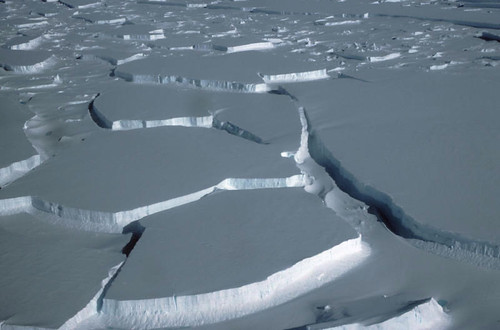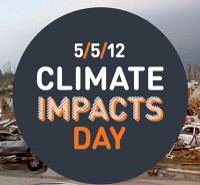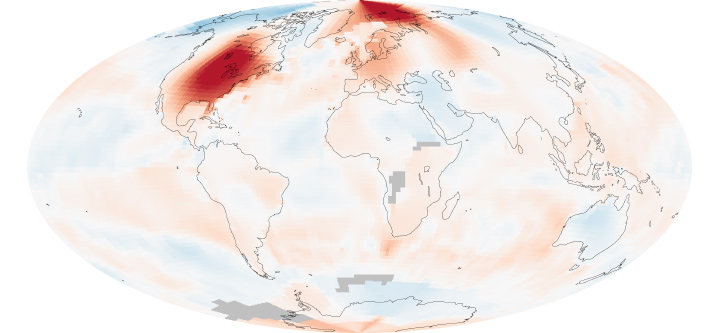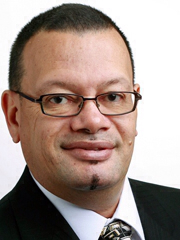To deal with the threats and challenges of climate change we need solidarity. We need to recognize that no matter where we live, we are one people on a single planet, the only planet that we have. We need many strong voices speaking together -- the voices of people from all those regions that the 2007 IPCC IV Report identified as “vulnerable.”
by: Sheila Watt-Cloutier, Inuit environment, culture and human rights advocate, and former political leader, Ronald Jumeau, Seychelles Ambassador for Climate Change and Small Island Developing State Issues
We need the Arctic, where the rapidly melting multi-year sea ice is just one symptom of massive changes now underway. We need the small island developing States (SIDS) like Tuvalu, Barbados and Seychelles whose homes are threatened with inundation. And we need voices of people who live in high mountain regions, on deltas and in the vast Savannah of the Sahel.
We need many strong voices, united in their resolve to defend human rights and determined to see their cultures survive and thrive.
Twenty years. That's how long we have both petitioned the world community to save our lands, our peoples and ways of life. We have done so in every conceivable manner and with ever-increasing urgency. Twenty years ago, when we began to experience climate change in our lands and communities, we began to worry that our children would no longer grow up in a safe and nurturing environment. We worried too that our ancient cultures, deeply connected to our lands, might not survive into future generations. Today, our children now experience those changes with us every day, and join in the appeal for future generations.
It is hard to imagine us coming from more different backgrounds: one from a balmy archipelago in the Indian Ocean and the other from the cold expanse of the northern tundra. Yet today we join with our brothers and sisters from other islands and polar regions through the Many Strong Voices programme[3] — a network of individuals and communities in the Arctic and SIDS connecting for strategic action on climate change mitigation and adaptation. We reiterate our unequivocal appeal: The world must take action now to stop climate change and address the damage already done.
Now as we approach the 20th anniversary of the United Nations Framework Convention on Climate Change (UNFCCC), we are running out of time. Last year’s climate change negotiations in Durban produced an agreement to adopt a binding legal agreement on climate change “as soon as possible, and no later than 2015.”[4]
We heard this kind of pledge leading up to the 2009 negotiations in Copenhagen that produced little of substance. Indeed, at the time the fact that the negotiation process itself lived on was heralded as a major victory.
Not to us.
As climate science has advanced, we now know the consequences of the world’s unwillingness to act. Even once the world agrees to stabilize and reduce greenhouse gas (GHG) emissions, warming from gases already in the atmosphere will tragically affect the most vulnerable regions of our planet. Sadly, as we have seen in places such as the Pacific island of Kiribati and the Alaskan community of Shishmaref, it may already be too late.
Even if the world forges an agreement three years from now, it will be very difficult to make the deep GHG emissions reductions that hundreds of scientific studies tell us -- clearly -- that we need to make in order to keep the world’s global average temperature from rising 2ºC above pre-industrial levels, let alone the 1.5ºC that the SIDS and a majority of the countries that have signed the UNFCCC are calling for. And we need to make sure that the rising line of emissions starts to bend down as 2020 dawns or it may be too late for our peoples and lands.
The impacts of climate change may be affecting small island states and remote Arctic communities with small populations, but they are also affecting hundreds of millions of people in the Ganges, Indus, Yangtze and other river systems dependent on glacial water for agriculture and drinking. If you look at it this way, the majority of the world’s population is experiencing the effects of climate change now.
Let’s be clear. This isn’t a numbers game. Article 3 of the UNFCCC clearly states that countries “should protect the climate system for the benefit of future and present generations of human kind on the basis of equity and in accordance with their common but differentiated responsibility and respective capabilities.” This means “developed countries should take the lead in combating climate change and the adverse effects thereof.” We haven’t seen much of this leadership in the negotiating process.
Other major emitters and emerging economies cannot afford to continue with business as usual.
Now, as the world approaches the 20th anniversary of the Rio Summit where the UNFCCC was negotiated, much attention is being placed on how to achieve a sustainable future. We would like to point out that our peoples have overcome innumerable challenges to thrive in our Arctic and island communities for hundreds and thousands of years. Our cultures are sustainable. But recently, our elders have been warning us that the changes we witness are unprecedented in our histories. They see our ice melting and our seas rising and are very concerned about how the next generation will thrive in the rapidly changing lands of our ancestors. If we lose our ice and our lands, we lose our cultures — some of the richest on Earth.
Our primary objectives are clear: reduce global emissions to avoid catastrophic warming while recognizing common but differentiated responsibilities between countries; ensure adequate adaptation measures are taken in areas facing the adverse effects of climate change now and in the future; and include human rights protections in the final agreement.
If we can achieve these goals, it will mark a watershed in humankind's ability to look beyond immediate and parochial interests and to reconnect as a shared humanity. It isn’t that complicated. All it takes is for us to recognize our common interest and that we are all here on this planet together. More
For more information visitwww.manystrongvoices.org or contact John Crump (john.crump [at] grida.no).
[1] Sheila Watt- Cloutier is an award winning Inuit environment, culture and human rights advocate and former political leader who was nominated for the Nobel Peace Prize in 2007.
[2] H.E. Ronald Jumeau is the Seychelles Ambassador for Climate Change and Small Island Developing State Issues.
[3] www.manystrongvoices.org
[4] http://unfccc.int/meetings/durban_nov_2011/meeting/6245.php






















